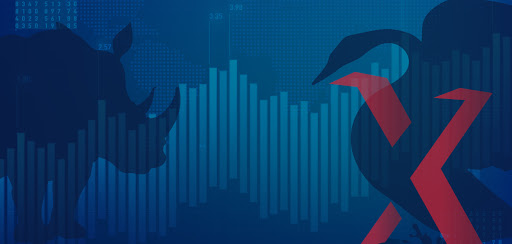2020 has been the sort of year that makes people naturally look forward to 2021. Even though the stock market has done well this year, it has come along with dramatic volatility.
Wall Street’s finest are starting to come out with their stock market projections for 2021, and there is a lot of optimism among their forecasts. S&P 500 is expected to rise to 3,900 by December 2021. The belief is that small-cap indexes like the Russell 2000 could do even better than large-cap benchmarks. Many small companies have taken a lot more damage from the pandemic than big multinationals, and they therefore stand to gain more when the economy returns to normal. Even so, the short term could be ugly. A new wave of COVID-19 cases could force new lockdowns and restrain economic activity, causing dramatic swings and potential correction in the coming months.
Coming out of a recession, we think it pays to buy stocks with the lowest expectations. That means owning small-caps over large-caps. Smaller companies typically lead coming out of recessions, and additional fiscal stimulus measures would likely be more supportive for smaller firms. The early-cycle playbook also favors high-quality cyclicals, such as U.S. and European financials, materials, and segments hard hit by COVID-19 lockdowns, such as travel and leisure. Significant outperformance among cyclical stocks–those in discretionary industries such as airlines, restaurants, and hotel chains–over the recent weeks is a sign the economic recovery is well underway, adding that these stocks should “extend their newfound leadership” next year.
While Europe continues to grapple with the pandemic, last year’s poor performance, coupled with strong fundamentals and policy support, could set Europe up for a strong “bounce back” next year— and even into 2022.
We expect investors to begin to step beyond the ‘obvious winners’ and deploy cash into beaten-down sectors and stocks that could benefit in recovery. This is where active investing can have an upper hand over index tracking.
Investors should prepare for a rotation into value as cyclical stocks, which have strong ties to economic growth and currently sport low valuations. Value stocks tend to lead the market higher in the early stages of an economic recovery from a recession. As companies begin to report earnings next year, value stocks will have an easier time beating their lackluster 2020 figures relative to growth companies that have a higher bar to pass to impress investors.
We expect dividend growth to resume in 2021 as vaccine distribution and greater clarity in general give company managements the confidence to release excess cash in the form of dividends and buybacks.

Potential Tailwinds for Equities
Shedding labour and higher productivity helped offset the demand collapse. Low inventories/rebounding production point to a margin recovery near term.
An upside case for earnings would encompass:
- Further productivity strength as demand rebounds
- Tepid wage growth
- Greater US dollar weakness
- Financials earnings recovery
- Continued Tech spend strength
Potential party poopers
Few things to watch out next year which may deter the bullish sentiment. Worse-than-expected vaccine rollout in the first half of the year. The first week of distribution has proven the logistics of proper delivery are complex. Additionally, ramped up federal spending for COVID-19 relief measures and ongoing asset purchases by the Federal Reserve could lead to a spike in inflation and interest rates, a trend that has historically resulted in market pullbacks. Lastly, the Georgia Senate runoffs on January 5 are still a great source of uncertainty and could rattle markets if Democrats pull two surprise victories.
A downside case for earnings would entail:
- A flatter recovery profile
- Wages rise more
- Taxes rise after the election
- Slowing Tech spend and investment





